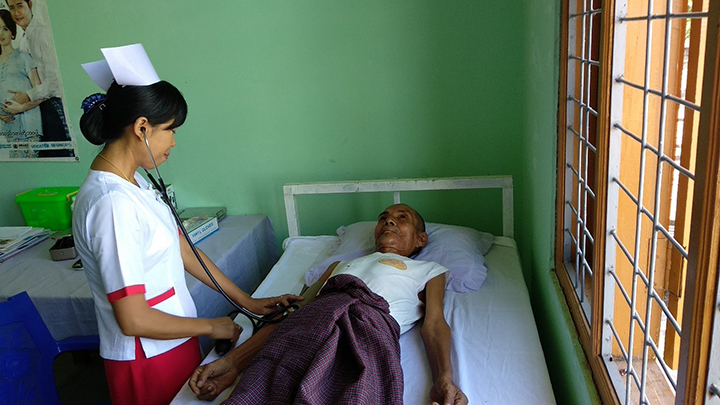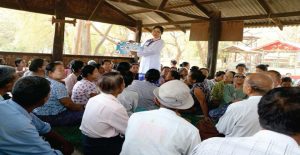18 February
In 1978, the World Health Organization (WHO) implemented the global strategy for ‘Health for All by the year 2000’ and acknowledged that preliminary healthcare is the first basic requirement of the people. Of the total population of Myanmar, 70 per cent live in rural areas and the nation provides preliminary healthcare for them and the rest of the citizens.
While preliminary healthcare was administered in the past, it was mostly focused towards preventing and eradicating contagious diseases. But there have been changes in how diseases infect and operate in the last decade, in addition to increasing lifespans, an ageing global population, and other factors have caused public health requirements to change over time as well. After passing through the new millennium, WHO has included elevating health and containing noncontagious diseases in its preliminary healthcare plan.
The 2014 WHO STEPS Survey reveals that 26.4% of adults in Myanmar (between ages 25 to 64) have hypertension, 10.5% have diabetes, and 22.4% are obese. Likewise, the National Survey on Causes of Death using verbal autopsy (2016-2017) shows that 74% of all deaths were attributed to hypertension, diabetes and other noncontagious diseases. As a result, there is now a greater need to administer healthcare for these diseases in the rural areas where the majority of our citizens live.
In May 2018, the Union Minister for Health and Sports directed rural health centres in Myanmar’s states and regions to open community health clinics for hypertension and diabetes every Wednesday. In August of the same year, the health ministry convened a meeting with the heads of its nationwide public health departments in Nay Pyi Taw to discuss successfully opening the clinics and to fulfill the healthcare requirements of the public.
The Wednesday-only clinics aim to provide accessible quality healthcare to the people, and to reduce the mortality rate from noncontagious diseases, especially hypertension and diabetes. The clinics also run public health education programs intended to teach individuals, families and the entire population on how to take care of their personal health. It will also enlighten them on when to consult with medical personnel in a timely manner. The clinics also aid in early identification of symptoms of hypertension and diabetes, providing treatment, and referring to specialist clinics or hospitals when required.

The community clinics provide uniform preliminary healthcare, prioritizes protection programs, utilizes public-approved methods that cater to the specific needs of a region, invites public participation, and cooperates with associated organizations on related issues.
Medical personnel in the community health clinics perform height measurements, weighing, body mass index calculations, identifying hypertension and diabetes, providing medical treatment if the diseases are present, referring to specialist clinics and hospitals if needed, and conducting public health education awareness programs.
Two months into opening the clinics, reports from 129 townships were compiled and revealed 319,001 men and 361,479 women received medical checkups for hypertension while 100,057 men and 152,302 women received checkups for diabetes. Of those numbers, 39,683 men and 51,343 women received treatment for hypertension while 10,977 men and 19,210 women received treatment for diabetes. From this, we can see that 12% of men and 11% of women checked for hypertension received treatment while 11% of men and 13% of women checked for diabetes received treatment as well.
We can see that the directions from the Minister for Health and Sports to open the Wednesday-only hypertension and diabetes treatment clinics are identifying these noncontagious diseases early on for people living in rural areas and providing appropriate treatments or referrals in order to prevent ensuing complications from arising. We can say that these clinics are a milestone for the MoHS in providing quality healthcare for hypertension and diabetes and reducing the mortality rate concerning them in all of Myanmar.
By Dr. Than Lwin Tun, Dr. Kyaw Kan Kaung, Dr. Nan Nai Nai Shein (Ministry of Health and Sports)
Translated by Poetplumber


